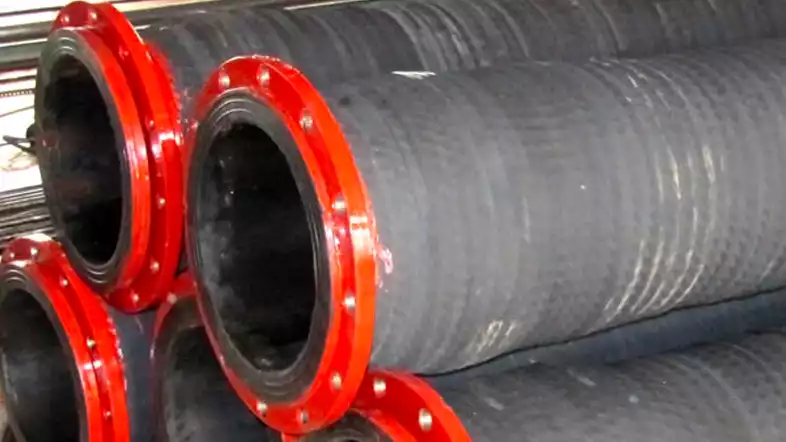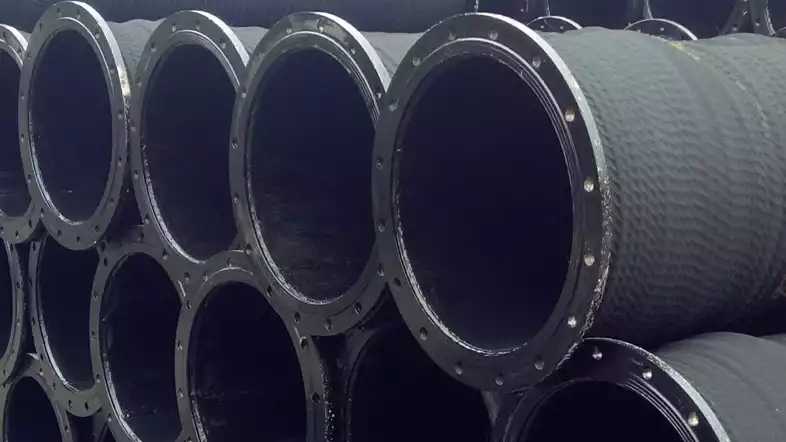Dredging is an important process used in various industries, including mining, construction, and marine engineering. It involves removing sediments and debris from the bottom of water bodies to deepen them, create new channels, or extract valuable materials. One of the key components of a dredging operation is the dredge discharge hose, which serves as the conduit for the sediments and debris that are removed from the dredged area. In this article, we will discuss the importance of the dredge discharge hose, its construction, and the factors to consider when choosing the right hose for a dredging operation.
What Is A Dredge Discharge Hose?
A dredge discharge hose is a specially designed pipe that connects the dredge pump to the discharge point. It is used to transport the sediments and debris from the dredging site to the designated location for disposal or reuse.
The dredge discharge hose is typically made of high-quality materials to withstand the harsh conditions of a dredging operation, including abrasion, corrosion, and impact.
Kingdaflex is one of leading dredge hose suppliers from China, and you can get more competitve dredging discharge hose for your projects.
Construction of a Dredge Discharge Hose

A dredge discharge hose is usually made of three layers: an inner lining, reinforcement layers, and an outer cover. The inner lining is made of a synthetic rubber material that is resistant to abrasion and corrosion. The reinforcement layers, which are typically made of high-strength synthetic fibers, provide structural support and ensure that the hose can withstand high pressure and tension. The outer cover is made of a tough, abrasion-resistant material that protects the hose from external damage.
The construction of a dredge discharge hose involves several layers of materials that work together to ensure its durability and performance. The inner lining of the hose is typically made of a synthetic rubber material that is resistant to abrasion and corrosion. This inner layer helps to protect the hose from damage caused by the sediments and debris being transported through it.
The reinforcement layers of the hose are made of high-strength synthetic fibers, such as polyester or nylon, which provide structural support and help to prevent the hose from collapsing under high pressure or tension. The number of reinforcement layers can vary depending on the specific application of the hose, but they are always designed to provide maximum strength and flexibility.
The outer cover of the dredge discharge hose is made of a tough, abrasion-resistant material that protects the hose from external damage. This outer layer is usually made of synthetic rubber or PVC, and it helps to protect the hose from cuts, punctures, and other forms of physical damage.
Dredge Discharge Hose Lengths
Dredging discharge hose lengths refer to the length of the hose used to transport sediment or debris from a dredging operation to a designated area for disposal or reuse.
Here are different lengths that can be choosed.
- 1.5 inch dredge hose
- 3 inch dredging hose
- 4 inch dredging hose
All lengths can be customized to satisfy your requirement for your project. The length of the hose will depend on various factors such as the distance between the dredging site and the discharge area, the volume of sediment or debris being transported, and the type of dredging equipment being used. Longer hoses may be required for larger dredging operations, while shorter hoses may be used for smaller ones.
It’s important to choose the appropriate length of hose to ensure efficient and safe operation. Using a hose that is too short could result in sediment or debris being discharged too close to the dredging site, which could cause damage or disruption to the ecosystem. On the other hand, using a hose that is too long could result in a loss of suction power and decreased efficiency in transporting the material.
Dredging discharge hose lengths should be selected based on the specific requirements of the dredging operation to ensure safe and effective transport of sediment or debris.
Factors to Consider When Choosing a Dredge Discharge Hose

When choosing a dredge discharge hose, several factors should be considered to ensure that it can perform well in the specific dredging operation. These factors include:
1. Hose Diameter
The diameter of the hose determines the flow rate of the sediments and debris from the dredging site. It is important to choose a hose with a diameter that matches the flow rate of the dredging pump.
2. Hose Length
The length of the hose should be sufficient to reach the discharge point without compromising the performance of the dredging pump. It is also important to consider the flexibility of the hose, especially if the dredging site has varying depths.
3. Operating Pressure
The operating pressure of the dredging pump should match the maximum pressure rating of the dredge discharge hose. Choosing a hose with a lower pressure rating can lead to hose failure and cause delays in the dredging operation.
4. Temperature Range
The dredge hose should be able to withstand the temperature range of the dredged material and the environment. Choosing a hose that cannot tolerate extreme temperatures can lead to hose failure and shorten its lifespan.
5. Compatibility with the Dredging Material
The dredge discharge hose should be compatible with the type of material being dredged. For example, if the dredging operation involves corrosive materials, the hose should be made of materials that can withstand corrosion.
Conclusion
In conclusion, the dredge discharge hose is an essential component of a dredging operation. It is responsible for transporting the sediments and debris from the dredging site to the designated location for disposal or reuse.
Choosing the right dredge discharge hose is crucial to the success of the dredging operation. Factors such as hose diameter, length, operating pressure, temperature range, and compatibility with the dredging material should be considered when selecting the appropriate hose.
For more detailed info, please feel free to contact us at any time if need.


